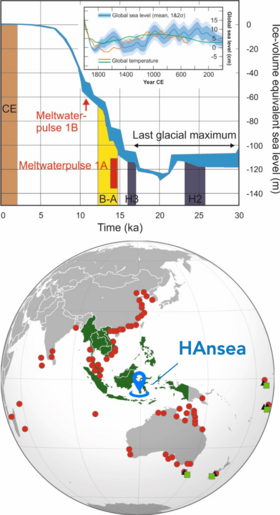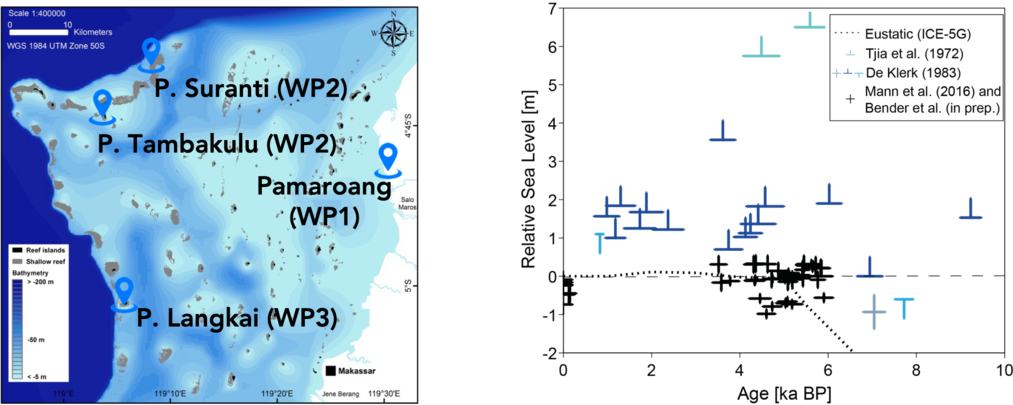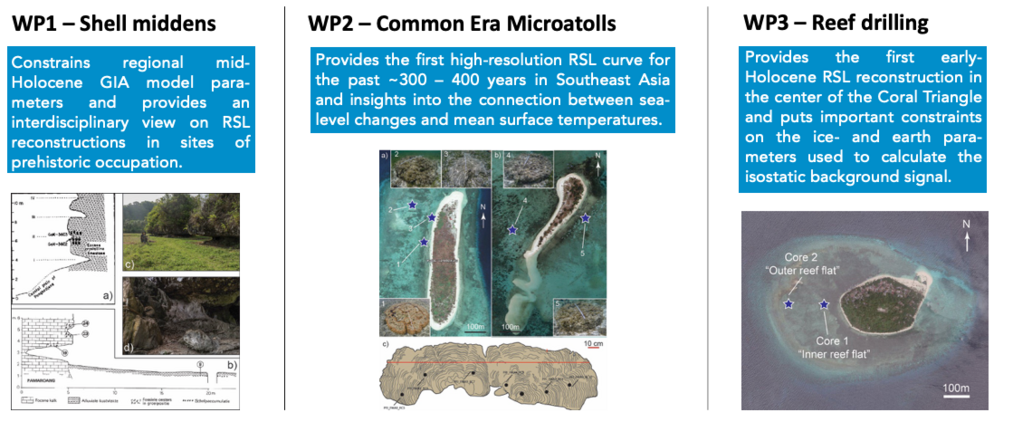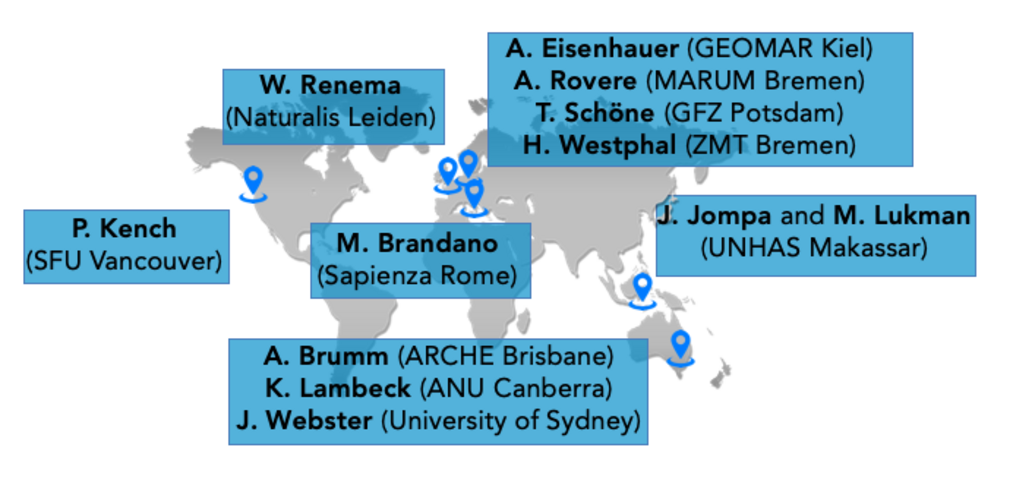HAnsea
Holocene and Anthropocene sea-level records from Indonesia (HAnsea)

Sea-level changes through the Holocene have been geographically variable. Large-scale mechanisms responsible for the observed variability comprise the interplay between eustatic melt-water contributions and isostatic adjustments of the solid Earth resulting from postglacial mass exchange between polar ice sheets and the oceans. These processes are further nuanced through oceanographic factors that act on shorter time scales and regionally constrained.
During the early Holocene, sea level has been rising rapidly in equatorial ocean basins, reflecting a dominant eustatic contribution far from the ice sheets. In the middle Holocene, when melting of ice sheets slowed down, isostasy became the dominant control on sea-level changes in the tropics as subsiding peripheral forebulges in higher latitudes induced a redistribution of water masses away from the equator towards the poles. In the late Holocene / Anthropocene, tropical sea-level variability has been largely determined by dynamic oceanographic and steric factors. Knowledge of the spatial and temporal interplay between the dominant drivers of Holocene sea-level changes in the far field is essential to understand past ice sheet dynamics, constrain Earth parameters in glacial isostatic adjustment models and evaluate anthropogenic influences (Fig. 1).
This project contributes to the understanding of the dominant drivers of Holocene / Anthropocene sea-level changes in Indonesia, an archipelago that is highly vulnerable to future sea-level rise. We will determine the rate of early Holocene sea-level rise and the timing when sea level first reached its present position from reconstructions based on coral reef drill cores in the tectonically stable Spermonde Archipelago, Sulawesi (Fig.2, left). Results will be compared to an ensemble of glacial isostatic adjustment simulations in order to detect at which point in time isostatic contributions became the dominant driver of early Holocene sea-level rise.
This project will furthermore validate existing mid-Holocene sea-level reconstructions for southwest Sulawesi, which are characterized by large inconsistencies, through a thorough field evaluation of the origins of the used sea-level indicators (Fig. 2, right). In combination with the early Holocene reconstructions, these results will be used to put precise constraints on the regional Earth model parameters and to provide a reliable isostatic background signal to the ongoing anthropogenic and dynamic oceanographic contributions. Lastly, this project will provide the first high-resolution sea-level record for the late Holocene / Anthropocene in Southeast Asia, based on floating chronologies from slabbed microatolls reaching back in time to the 17th century. This unique record will be used to evaluate the steric contribution on sea-level variability in the Indo-Pacific Warm Pool during the Little Ice Age and the 20th century global warming.



